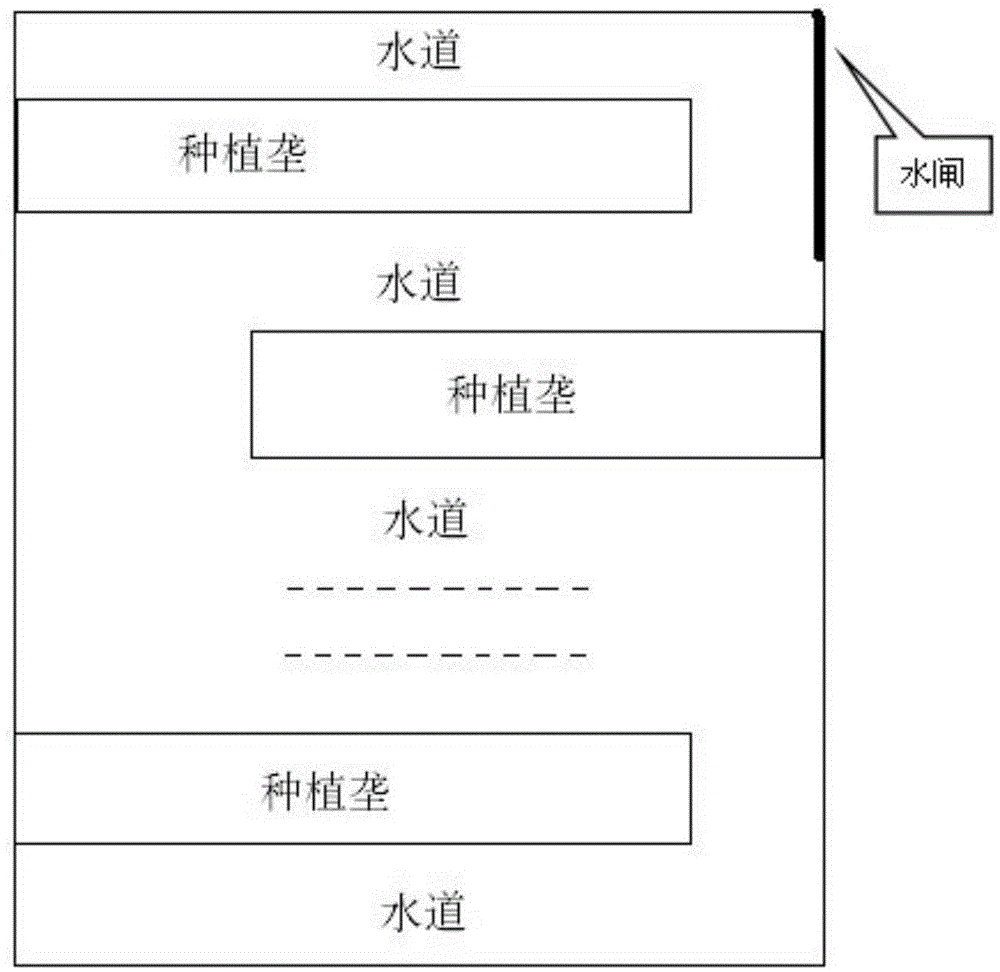Forestation technology using mangrove forest plant to convert pond to forestry
A mangrove plant and technology technology, applied in the afforestation field of returning ponds to forests, can solve the problems of mangrove death, serious diseases and insect pests, collapse of mangrove ecosystems, etc., and achieve the effect of high survival rate
- Summary
- Abstract
- Description
- Claims
- Application Information
AI Technical Summary
Problems solved by technology
Method used
Image
Examples
Embodiment 1
[0024] In May 2013, the test of returning ponds and replacing forests was carried out near Daoxue Station in Dongzhaigang Mangrove National Nature Reserve, Haikou, with a test area of 300m 2 , and the construction specification is 6 planting ridges of 3m wide × 10m long × 0.4m high, and the interval between ridges is 2m. The salinity is 10‰. The selected mangrove tree species are: Sangria sinensis (plant height 40-60cm, base stem 0.7-0.9cm), tung flower tree (plant height 40-60cm, base stem 0.8-1cm), olive plum (plant height 50-60cm, Base stem 0.5-0.6cm), Zhenghongshu (plant height 30-40cm, base stem 0.7-0.9cm). Sonnensis is planted at a spacing of 1m×1m, and other tree species are planted at a spacing of 0.5m×0.5m. By May 2014, the survival rate of Sangria sinensis was 95%, the tree height reached 1.7m-2m, and the base stem increased to 2.5-3cm; the survival rate of tung flower tree reached 90%, the tree height reached about 1m, the base stem increased to 1 -2cm; the sur...
PUM
| Property | Measurement | Unit |
|---|---|---|
| Width | aaaaa | aaaaa |
Abstract
Description
Claims
Application Information
 Login to View More
Login to View More - R&D
- Intellectual Property
- Life Sciences
- Materials
- Tech Scout
- Unparalleled Data Quality
- Higher Quality Content
- 60% Fewer Hallucinations
Browse by: Latest US Patents, China's latest patents, Technical Efficacy Thesaurus, Application Domain, Technology Topic, Popular Technical Reports.
© 2025 PatSnap. All rights reserved.Legal|Privacy policy|Modern Slavery Act Transparency Statement|Sitemap|About US| Contact US: help@patsnap.com

